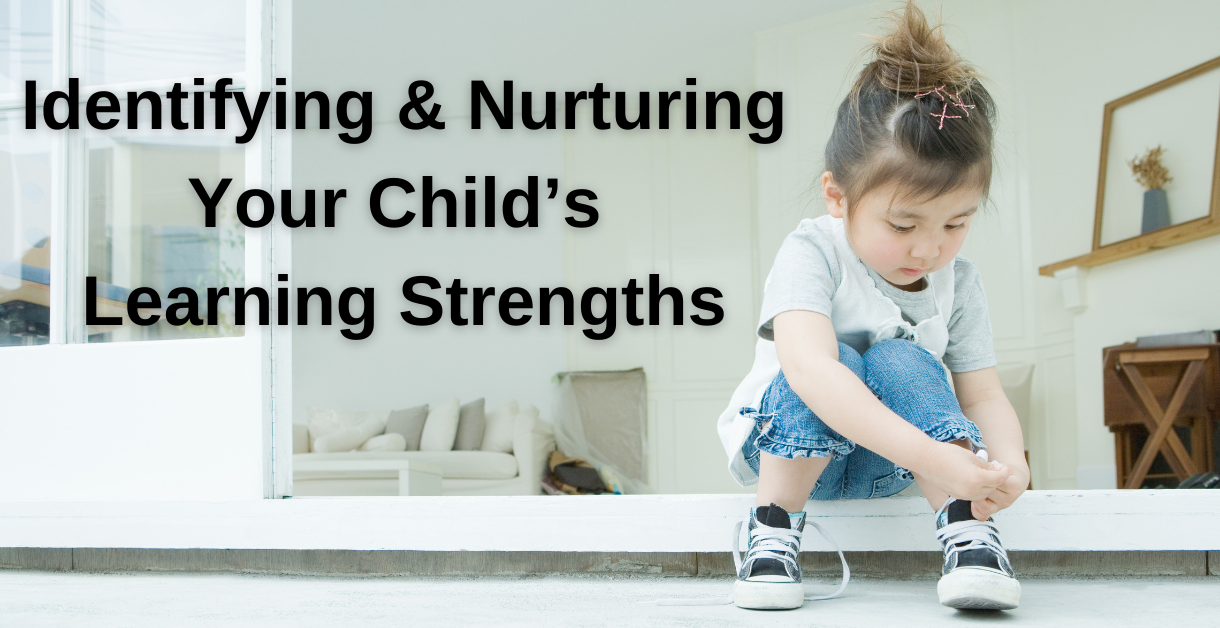Would you force your child to wear shoes that don’t fit? I hope not! Shoes that are too small hurt and cause damage; shoes that are too big hinder walking and can result in tripping or falling. You want your child’s shoes to be the correct size, right?
What about your child’s education—does it fit your child?
An education that doesn’t fit is as painful, or even more painful, than ill-fitting shoes—an ill-fitting education affects a person for life.
What does an ill-fitting education look like? Well… when learning is painful, causes anxiety or anger, or leads to boredom or, even worse, depression… these are all signs of an ill-fitting education.
As a homeschooler, you have the power to make sure that your child’s education is the right fit, the correct “size.” Since there are many facets to learning, we might think of it more like the blueprint or map you would use to create the program that is best suited for each child.
Your child’s learning styles – or strengths – are his/her blueprint for learning success and life success.
Here are 5 important elements of learning styles that affect all learning, working, and communicating:
1. Dispositions are our basic learning personalities and are like the hardwiring in a computer. The Dispositions are: Spontaneous, Organized, Curious, Supportive, and Imaginative. Most curriculum—for both traditional classroom and homeschool—is created for the Organized Disposition only, leaving out the other four:
The Spontaneous Disposition needs to move in order to learn; the Curious Disposition needs to explore, question, and discover; Supportive Disposition students need collaboration and discussion to do their best learning; and Imaginative Disposition people need lots of unscheduled time to wonder, imagine, and be creative.
2. Modalities tell us what is the best way for your brain to bring in information. The Modalities are: Listening, Verbal, Picture, Print, Hands-On, Whole Body, Sketching, Writing.
Modalities are important to keep in mind. For example, students who are NOT Writing Learners will never learn spelling words by writing them over and over! But maybe one of these students is a Sketching Learner, and drawing picture clues would work for spelling.
Another example is the Verbal Learner, who needs to hear the sound of his/her own voice. Verbal Learners often get in trouble for reading aloud or “talking to themselves.” Their teachers or parents don’t realize that they are intuitively using the Modality they need for effective learning to take place!
3. Interests are our #1 motivators. When we are passionate about something, we will work our tails off! The best school program is the one that allows for interest-led learning—there is nothing more powerful.
4. Talents are a person’s natural skills and abilities. Sometimes people are interested in pursuing their Talents and sometimes they are not. If your child has a Talent that he/she is interested in pursuing, you can build the whole school program around this Talent.
5. Environment is an important element that is often taken for granted. Color, Sound, Temperature, Time of Day, and Lighting are some of the things that can affect your mood, ability to concentrate, and productivity. For one person one of these elements might be crucial, for someone else it wouldn’t matter. Sometimes a very small change in the Environment can have a dramatic result. One mom told me that her daughter’s least favorite color was black and, suddenly, she realized that the schoolwork table was black! She had not thought about it before. So she covered the table with her child’s favorite color. The result?—a big change in getting things done.
Finding out your child’s learning style has benefits for your child and for you! This kind of information can improve: 1) your child’s chances for success, 2) your ability to communicate with your child, 3) your ability to teach effectively, and 4) your chances of raising a competent, responsible, independent, creative adult.
Thank you to Mariaemma Willis, M.S. for sharing with us this week.
![]() Mariaemma is the co-founder of LearningSuccess™ Institute and SchoolAtHomeMadeEasier.com, and co-author of the books Mid-Life Crisis Begins in Kindergarten and
Mariaemma is the co-founder of LearningSuccess™ Institute and SchoolAtHomeMadeEasier.com, and co-author of the books Mid-Life Crisis Begins in Kindergarten and
Discover Your Child’s Learning Style.
She also co-developed the Self-Portrait™ Power Traits Assessment, an online tool that provides immediate insights and recommendations for a person’s learning styles.
Would you like to assess your child's learning strengths to create a more effective and enjoyable experience? Save 43% at the Club on The LearningSuccess™ Institute's Self-Portrait™ Power Traits assessment HERE.


